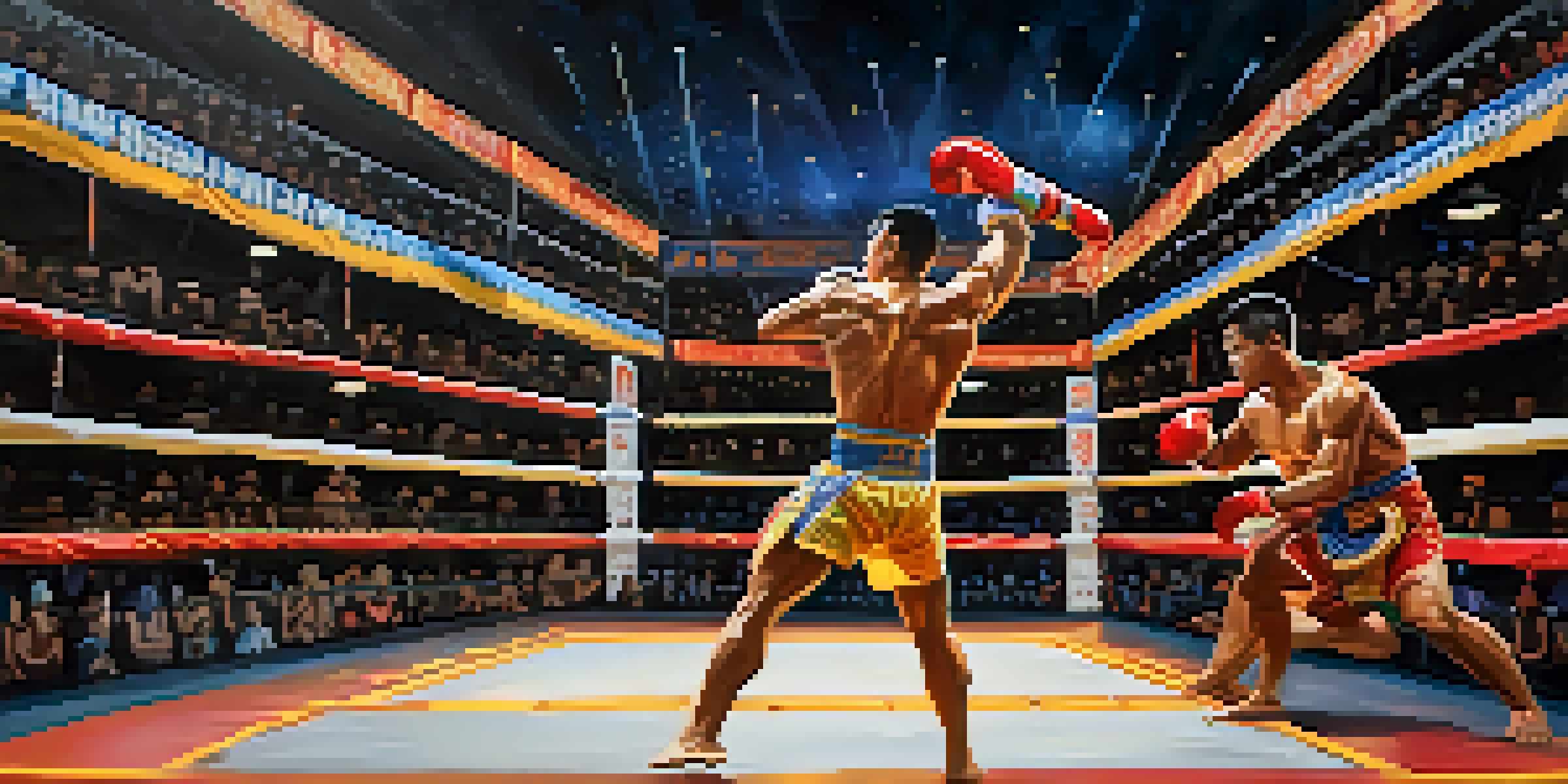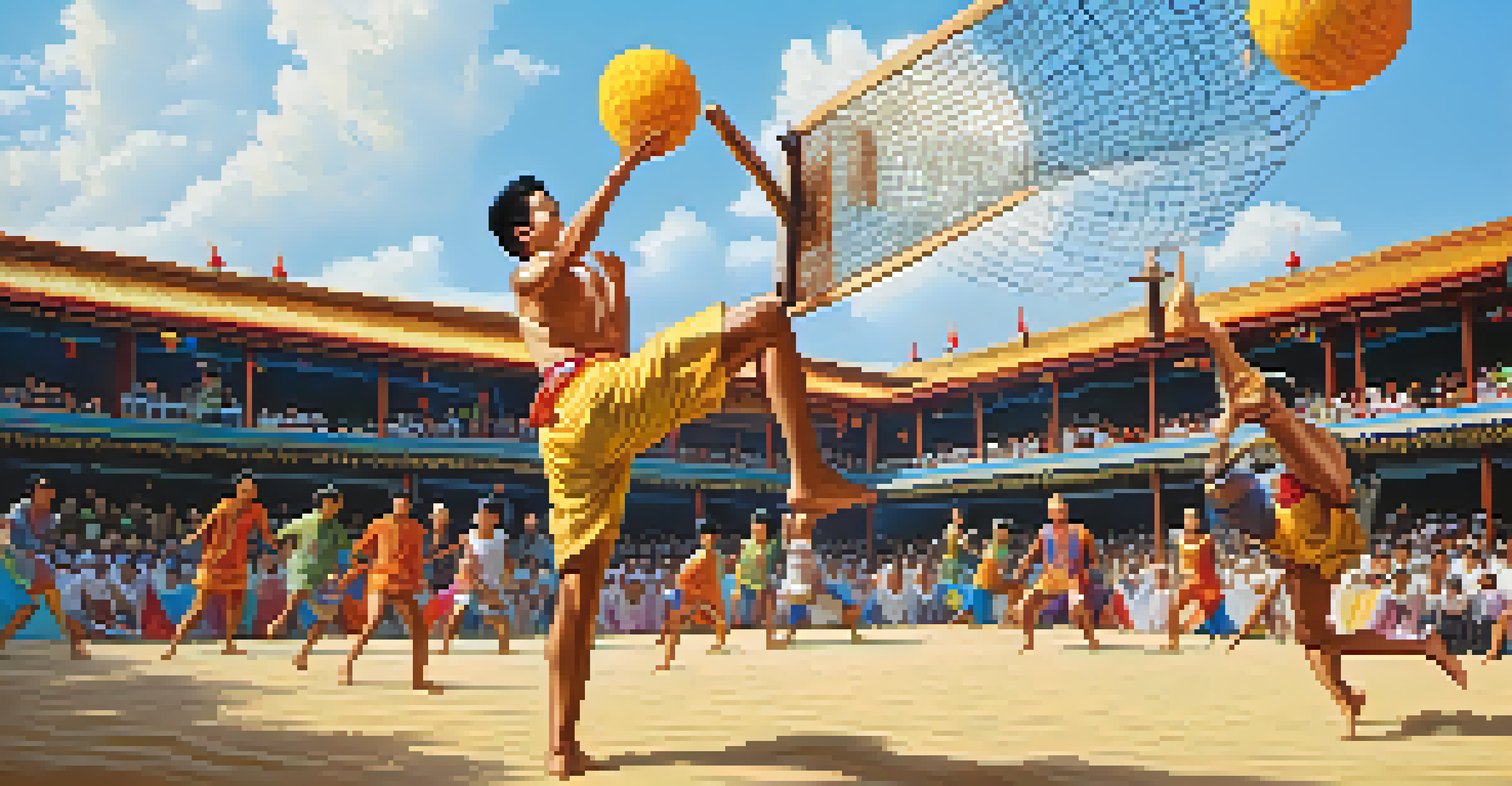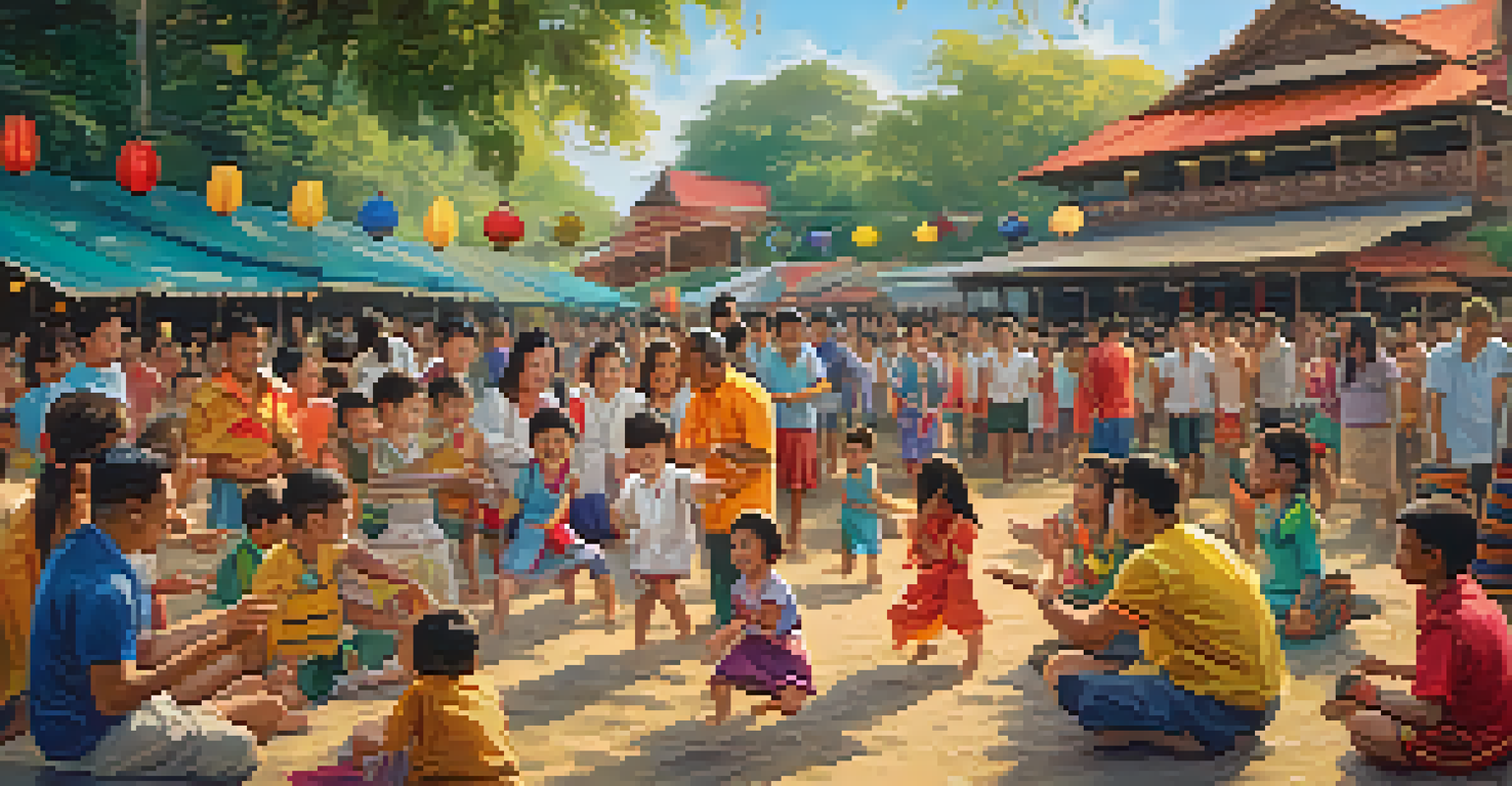The Rich History of Traditional Thai Sports and Games

Introduction to Traditional Thai Sports and Games
Traditional Thai sports and games are not just activities; they are a reflection of the culture and history of Thailand. From ancient times, these games have played a significant role in community life, often linked to festivals and rituals. Understanding these sports offers a glimpse into the values and traditions that have shaped Thai society over centuries.
Sports do not build character. They reveal it.
Each sport and game tells a story, whether it's the martial prowess of Muay Thai or the agility required in Takraw. These sports foster not only physical health but also a sense of community and national pride. As we delve deeper, we'll uncover the unique characteristics that make these games stand out.
Moreover, the evolution of these sports reveals much about Thailand’s historical journey, including influences from neighboring cultures and the impact of modernization. Let's embark on this journey through time to appreciate the rich tapestry of traditional Thai sports.
Muay Thai: The Art of Eight Limbs
Muay Thai, often referred to as the 'Art of Eight Limbs,' is perhaps the most well-known traditional sport in Thailand. This martial art utilizes punches, kicks, elbows, and knee strikes, making it a dynamic and effective form of combat. It has deep roots in Thai history, originally developed as a battlefield technique for soldiers.

Beyond its physicality, Muay Thai is steeped in tradition, featuring rituals like the Wai Khru, a dance performed to pay respect to teachers and ancestors. This cultural aspect makes it more than just a sport; it is a ceremony that embodies the spirit of Thai heritage. Many practitioners find that the discipline and respect cultivated in Muay Thai extend beyond the ring.
Muay Thai: Cultural Heritage in Motion
Muay Thai showcases Thailand’s martial traditions while embodying respect and cultural rituals, making it more than just a sport.
Today, Muay Thai has gained international fame, drawing enthusiasts from around the world. However, its essence remains firmly rooted in Thai culture, showcasing the balance between tradition and modernity. The global spread of Muay Thai continues to enhance its significance as a cultural ambassador for Thailand.
Sepak Takraw: A Unique Thai Sport
Sepak Takraw is another captivating traditional sport that showcases Thailand's athletic flair. Often described as a combination of volleyball and soccer, this game involves players using their feet, head, knees, and chest to hit a rattan ball over a net. Its origins can be traced back to the 15th century, making it a long-standing favorite in Southeast Asia.
The essence of sport is not about winning or losing; it's about the journey and the experiences we share along the way.
The skill level required for Sepak Takraw is astonishing, with players performing acrobatic maneuvers and intricate footwork. Watching a match can be mesmerizing, as athletes execute seemingly impossible kicks and flips. This sport not only tests physical capabilities but also emphasizes teamwork and strategy.
As it gains popularity, especially in international competitions, Sepak Takraw serves as a cultural bridge, introducing the essence of Thai sportsmanship to global audiences. The blend of athleticism and artistry in this game makes it a unique representation of Thai culture.
Traditional Thai Games: A Community Affair
Beyond the competitive sports, Thailand boasts a variety of traditional games that foster community engagement. Games like 'Khan Kluay' and 'Chai Yen' are often played during festivals and gatherings, encouraging participation from all ages. These games are not just fun; they also strengthen social bonds and cultural identity.
Many of these traditional games have simple rules, making them accessible to everyone. They often involve teamwork, laughter, and a sense of camaraderie that is cherished in Thai culture. Such games are a reminder of the importance of community and collective joy in a fast-paced world.
Community Spirit Through Traditional Games
Traditional Thai games foster community engagement and social bonds, highlighting the importance of collective joy and cultural identity.
As modern technology encroaches upon these traditions, efforts are underway to preserve and promote these games. Schools and community centers are increasingly incorporating them into their activities, ensuring that the spirit of these games lives on. They serve as a testament to Thailand's rich cultural heritage.
The Role of Festivals in Thai Sports
Festivals in Thailand are vibrant celebrations that often feature traditional sports and games, showcasing the country's rich cultural tapestry. Events like Songkran and Loy Krathong not only highlight Thailand's festive spirit but also serve as platforms for traditional competitions. These gatherings allow communities to come together, celebrating their heritage through sports.
During these festivals, you can witness a variety of traditional games, from tug-of-war to rice sack races. Each game is infused with local customs and often involves rituals that honor local deities or ancestors. Such festivities ensure that the games are not just activities but are steeped in meaning and tradition.
Furthermore, the festivals attract tourists, providing them with a unique opportunity to experience Thai culture firsthand. This blend of tradition and tourism helps to foster greater appreciation for the rich history behind these sports, ensuring their continued relevance in a modern context.
Modern Influence on Traditional Thai Sports
In recent years, traditional Thai sports have seen a resurgence thanks to modern influences. The rise of social media has allowed athletes and enthusiasts to showcase their skills, attracting a new generation to these age-old games. As a result, there is a renewed interest in preserving and promoting traditional sports within Thailand and beyond.
Moreover, various organizations have emerged to support and formalize these sports, providing training and resources. This structured approach has led to increased participation and recognition, both locally and internationally. It’s fascinating to see how traditional sports can evolve while maintaining their core values.
Modern Influences Reviving Traditional Sports
The rise of social media and organized support is reinvigorating interest in traditional Thai sports, helping preserve their cultural significance.
This modern twist not only helps preserve Thai culture but also reinforces national identity among the youth. As they engage with these sports, they become ambassadors of their heritage, ensuring that the rich history of traditional Thai sports continues to thrive.
The Future of Traditional Thai Sports and Games
Looking ahead, the future of traditional Thai sports and games appears promising yet challenging. With globalization and technological advancements, there is a constant tug-of-war between preserving tradition and embracing modernity. However, the passion for these sports remains strong among both locals and international fans.
Efforts to promote these sports through schools and cultural programs are essential for their survival. By instilling a sense of pride and understanding in younger generations, traditional sports can continue to flourish. This is not just about keeping the games alive; it's about nurturing a cultural legacy.

Ultimately, the future of traditional Thai sports lies in their ability to adapt while honoring their roots. As communities rally to support these sports, they ensure that the rich history of Thai culture remains vibrant and relevant in our ever-changing world.